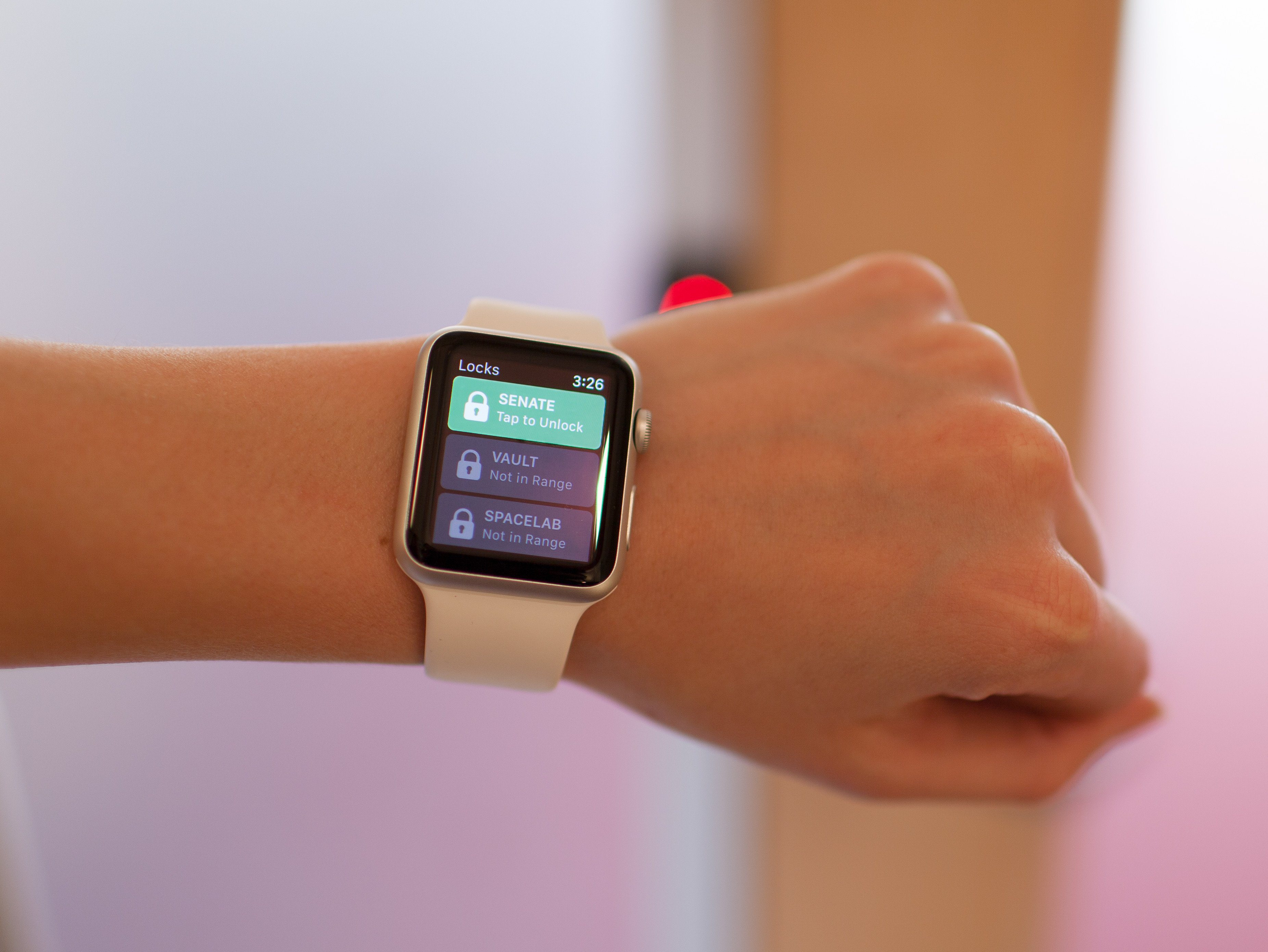If you happen to be the adventurous do-it-yourself (DIY) orientated type of individual who likes to sink their teeth into an exciting technology based challenge then this one could be for you. Marc Jensen, James Squires, and Shawn Roske from Make: have produced a walkthrough video that shows how you can “automatically” open doors at home or work by simply tapping on the display of an Apple Watch.
This one well and truly falls under the “hacks” category as it utilizes a little bit of programming knowledge, a RFduino microcontroller and approximately 10-12 hours of an individual’s time. It also requires a small financial outlay to purchase the few little bits of hardware that’s required for the project, but considering that amounts to less than $150 we’re sure there aren’t going to be any complaints, especially when you consider how much popular smart locks sell for these days.

So, just how have these guys managed to discover and achieve something that no-one else has done yet? By integrating standard door-strike hardware with a tiny RFduino controller, they’ve managed to build a custom Apple Watch app that causes the electronic door strike to fire and bypasses the door latch or locking mechanism. The RFDuino module was chosen for its compact form factor and Bluetooth Low Energy integration that allows it to continually communicate with the devices running the custom app.
This particular project was undertaken by the DIY online magazine to solve a real-world issue that the company and its employees were facing:
We started this project to help solve a real-world problem: prevent our employees from being locked out of our office. Our security system automatically locks the doors outside of normal business hours. If someone steps out of the office without their security card or keyfob, they’re locked out. When this happens, people use their phone to call or email people at the office to let them back in. This showed us that people may forget their security card — but they don’t forget their phone.
It’s fantastic that the team managed to pull together a project of this nature that immediately solved their own problems, as well as documenting it for others to try. However, what’s more interesting is their vision of how it could be extended. The creators of this hack believe that additional security layers could be added by requiring existing access to a secure WiFi network before allowing the door to be unlocked. There’s also the possibility of extending the project to additional platforms, such as Android, as well as the addition of a piezo speaker to unlock via sound.
Check out the video yourself and sound off if you plan or spending your weekend hacking this together.
You may also like to check out:
You can follow us on Twitter, add us to your circle on Google+ or like our Facebook page to keep yourself updated on all the latest from Microsoft, Google, Apple and the web.

